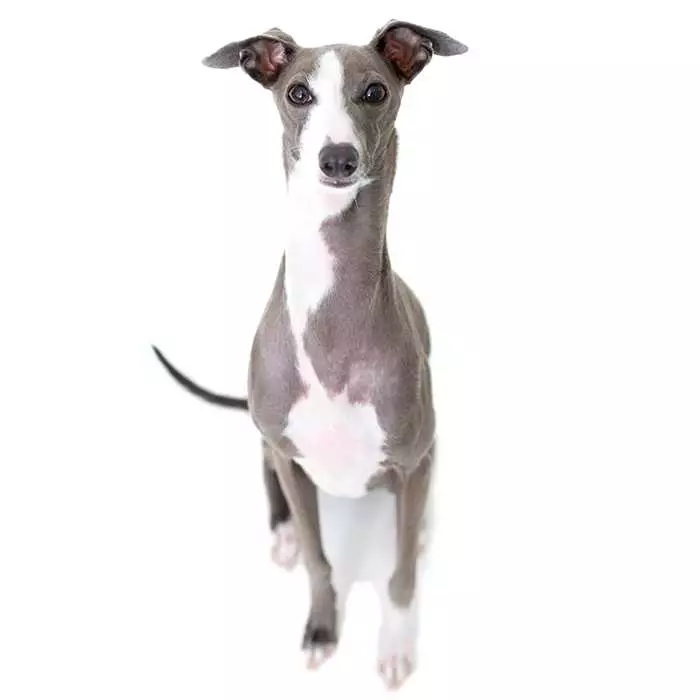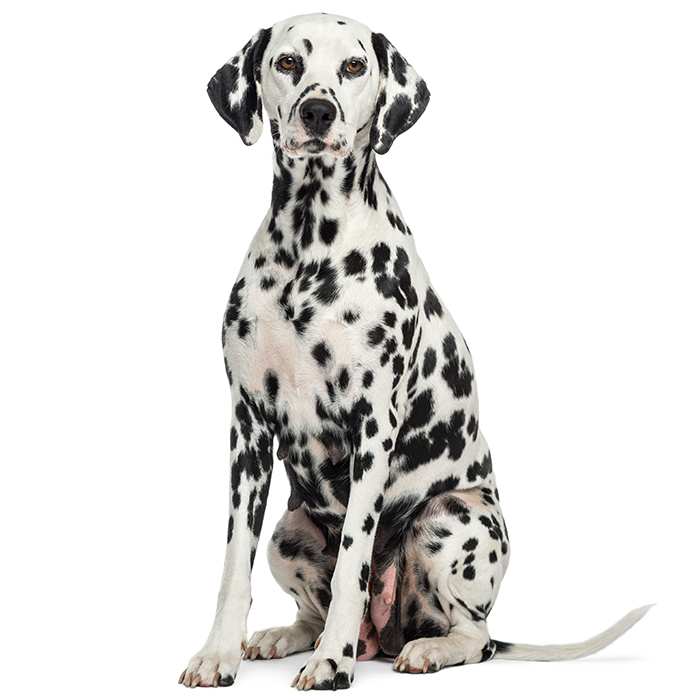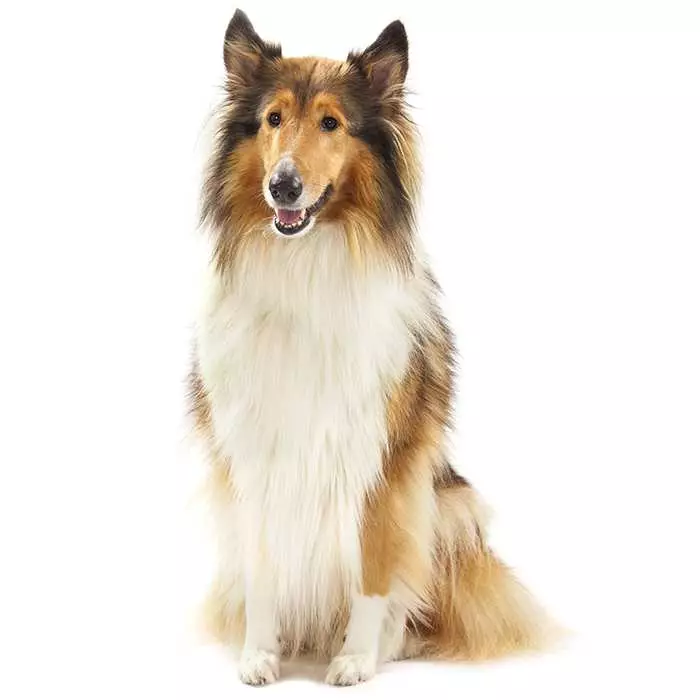Australian Bulldog
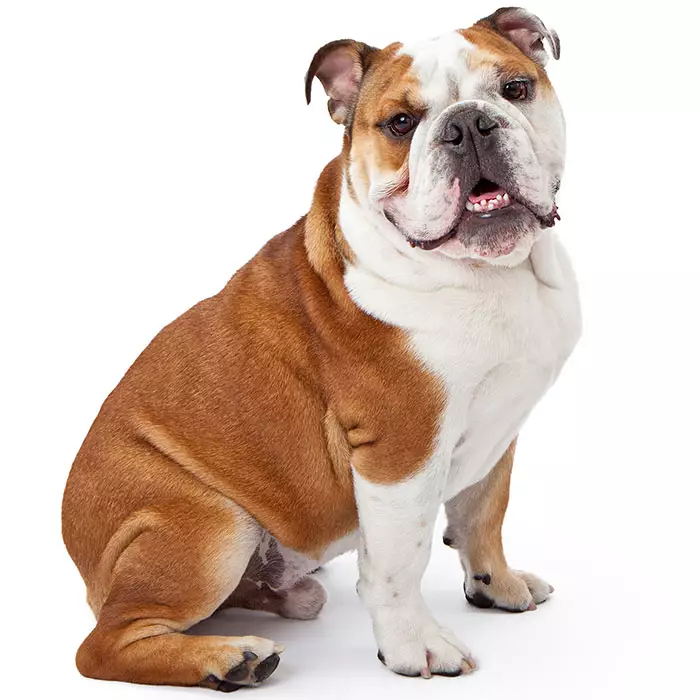

| Recommended for | Families with older kids |
| Breed Classification | None |
| Other names | Aussie Bulldog, Australasian Bosdog |
| Lifespan | 12-15 years |
| Size | Large |
| Temperament | Loyal, affectionate, good-natured |
| Intelligence | Above average |
| Tendency to bark | Moderate |
| Maintenance Level | Medium |
| Health Risk | This breed has an around average probability of having health issues in its lifetime, hence it is one of the more affordable breeds to insure. |
Insuring an Australian Bulldog?
Get our award-winning Nose-to-Tail Cover with up to $30k annual benefit limit, up to 90% of eligible vet bills back, and no sub-limits.
Get a quick quote
Is this breed right for you?
Try our breed selector quiz to find out your best matching breed!
Insuring an Australian Bulldog?
Get our award-winning Nose-to-Tail Cover with up to $30k annual benefit limit, up to 90% of eligible vet bills back, and no sub-limits.
Get a quick quote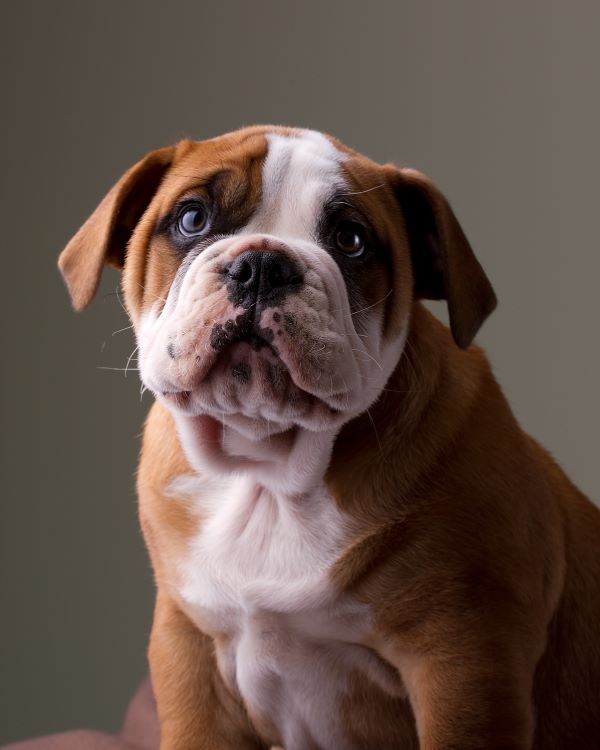
Breed history of Australian Bulldogs
The Australian Bulldog is a very new breed of domesticated dog, first developed in the 1990’s in Queensland, Australia. Pip Nobes first mated an English Bulldog with an Australian pig hunting dog of bull terrier origin. The mix produced a taller and more athletic Bulldog with fewer health problems and a greater tolerance for the Australian heat.
The English Bulldog was developed in England for the purposes of bull baiting, a practice where dogs would attempt to latch on to the snout and face of an enraged bull. It was believed that by getting a bull’s spirits up and heated, the animal’s meat would be more tender and delicious upon slaughter. Bull baiting was also a popular spectator event and other animals like bears would be baited as well.
With the abolishment of bull baiting in the 1930’s the English Bulldog was swiftly put out of work. Although no longer required to fight, many people in England had developed a fondness for the Bulldog’s great loyalty, tenacity and strength. The breed was developed into a companion dog and while it remained strong and loyal, its aggressiveness was soon replaced with a joyful and affectionate nature.
Upon arrival in Australia, the modern English Bulldogs were particularly ill-suited to the country’s extreme heat. Nobes’s development of a healthier Australian Bulldog breed was featured on Burke’s Backyard in 1998 and it was positioned as a bulldog with a great temperament and particularly healthier than the English Bulldog. From then on the Australian Bulldog captured the nation’s interest and the breed has enjoyed a great deal of success. In 2003, Pip Nobes founded the United Aussie Bulldog Association (UABA). She later left that group and formed the Australian Bulldog Society (ABS) in 2004. The group’s aim is to have the Australian Bulldog formally recognised by Dogs Australia (previously the Australian National Kennel Council or ANKC).
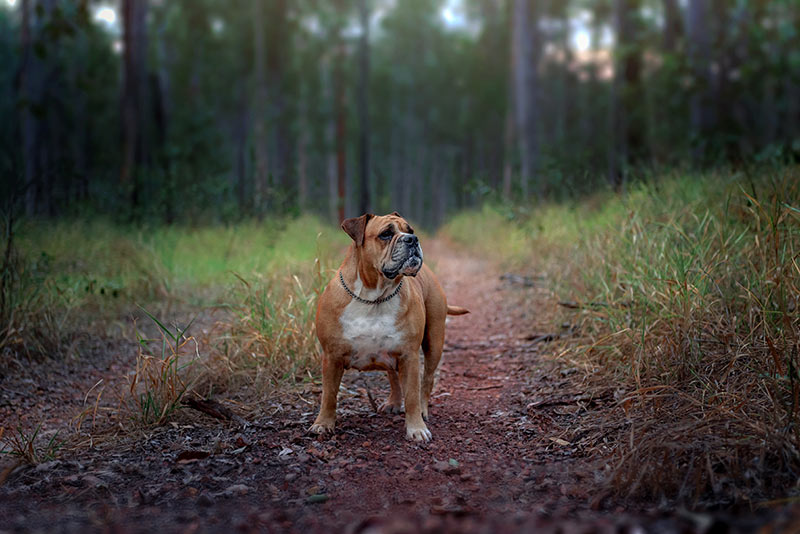
Physical description of Australian Bulldogs
The Australian Bulldog is distinctly bulldog-looking. It is a solid, thickset, large-sized dog with a powerful, compact build that shows strength and stamina.
The head is large, strong and square, but in proportion to the body, with a broad, short muzzle that is turned up, loose folds of skin across the nose, wide-set eyes and small, wide-set ears.
The coat is smooth, short and tight to the body and comes in a variety of colours. To reduce the incidence of skin cancer in the Australian Bulldog, dark pigmentation on the sensitive areas exposed to the sun is desirable.
| Weight range | Males 28 to 38 kg; females 24 to 30 kg |
| Height range | Males 43 to 52 cm; females 43 to 50 cm |
| Colours | Colours include red and white, fawn & white, and brindle and white and varieties of these |
| Coat length | Smooth & short |
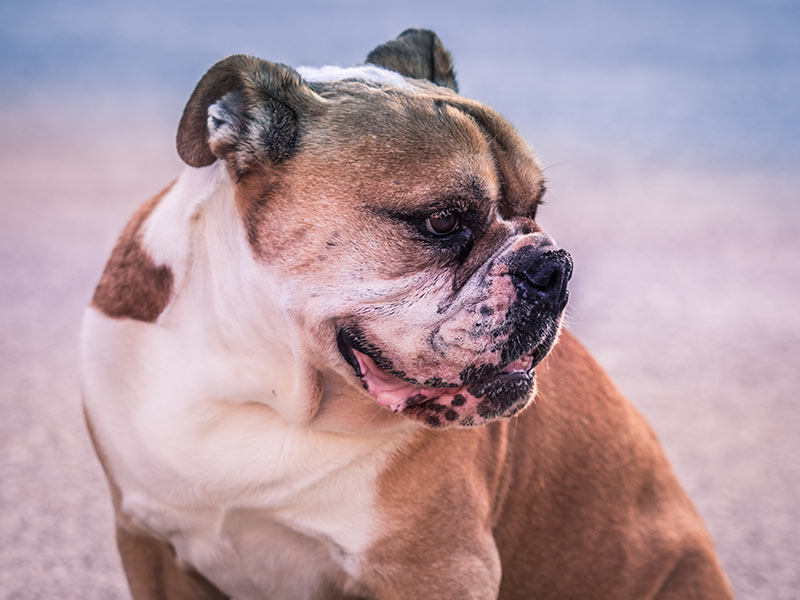
Australian Bulldog personality and temperament
The Australian Bulldog, like its English cousin is a very persistent yet even-tempered and gentle breed of domesticated dog. Their affectionate, outgoing nature is devoid of any of the natural reserve found in many other breeds.
They are very loyal animals and are keen to please their owners. Very people-orientated, they crave human attention at all times, so are best suited to a family environment where there will be some contact throughout the day. Separation anxiety is common in the breed if they are left alone for an extended period of time.
Aussie Bulldogs are quite stubborn, but thanks to their intelligence and loyalty, they are controllable. That said, good luck trying to get your Aussie Bulldog up from his warm bed on a winter’s morning to go outside into the cold!
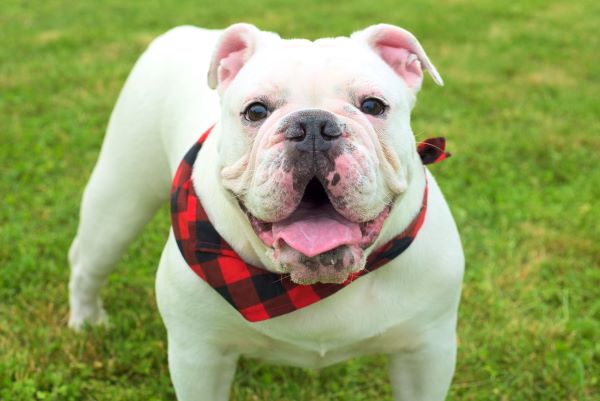
Australian Bulldogs with kids and other pets
The breed is especially good with older children, being highly affectionate, protective, easy-going and fun-loving. However, their bulldozing nature makes them less suitable for families with young children, and their “barge-in” attitude can even bowl over unsuspecting adults.
They usually get along with other pets, although some Aussie Bulldogs can be a bit dominant with other dogs and/or may not tolerate aggressive overtures by other dogs.
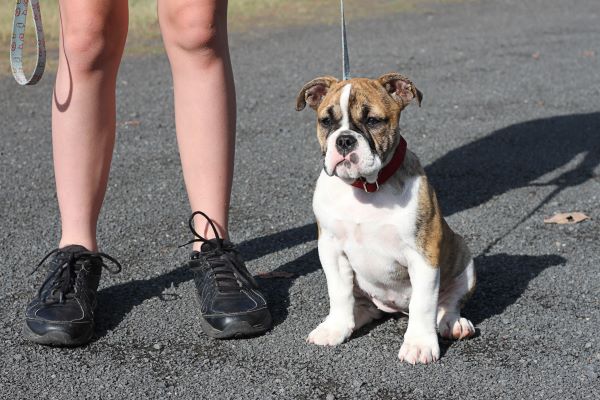
Australian Bulldog training and exercise
Australian Bulldogs are not overly energetic but they have plenty of stamina and are enthusiastic at play time. They should be exercised at least once a day, with regular walks recommended to keep their weight down. A lot of exercise is not necessary for their health and mental stability.
Although bred to deal better with harsh Australian conditions, they are best suited to living indoors as they can feel the heat, especially in summer. Owners need to keep in mind that not all Bulldogs can swim, rather sink like a brick, so extra care around water is needed.
Because the Australian Bulldog is a stubborn and persistent animal, training can be a chore – but only if the owner doesn’t commit to a regime with patience and consistency. Commencing training when the Bulldog is a puppy is a must and establishing a pecking order early is essential for good behaviour to follow, while firm and consistent discipline is important when establishing the position of the pack leader.
| Energy level | Medium |
| Exercise requirements | Medium |
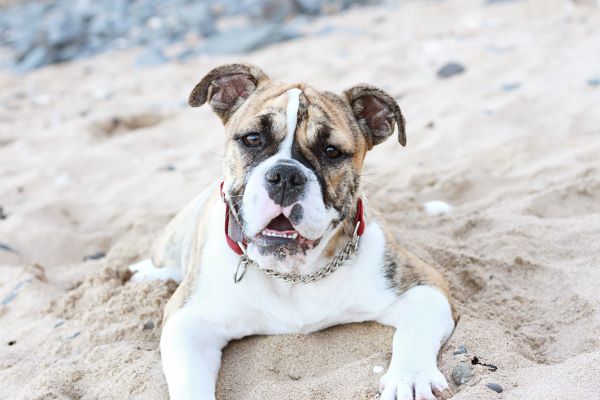
Australian Bulldog feeding and nutrition
The Australian Bulldog should be fed a premium, high-quality dog food appropriate to the dog’s age (puppy, adult, or senior).
Aussie Bulldogs who aren’t sufficiently exercised may become overweight, so watch your dog’s calorie consumption and weight level and don’t overindulge in the treats department.
Check with your vet if you have any concerns about your dog’s weight or diet.
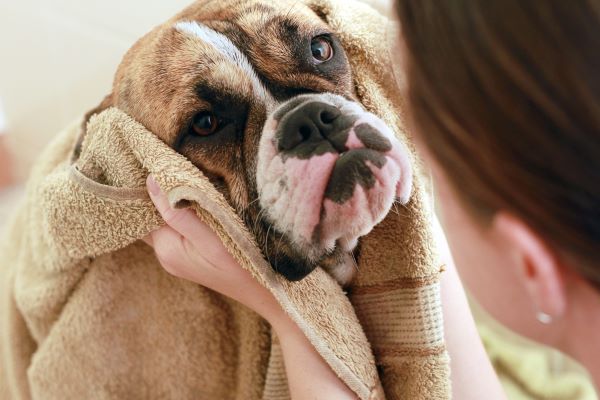
Australian Bulldog care and grooming
The short coat sheds little hair and is easy to groom by combing and brushing a couple of times per week with a firm bristle brush. Bathing is required only when necessary, although the face should be wiped daily with a damp cloth to clean inside the wrinkles.
Health issues for Australian Bulldogs
Because the Australian Bulldog is such a young breed it’s difficult to measure the true extent of improved health over that of the English Bulldog. The Australian Bulldog does tend to suffer from many of the same conditions that affect the English Bulldog, but many of these cases are either less severe or occur at a lesser rate in the breed.
- Keratoconjunctivitis Sicca, also known more commonly as ‘dry eye’, is a condition that is usually caused by an autoimmune reaction targeting the animal’s tear glands, resulting in a reduction in the generation of tears. Keep an eye out for sore or irritated eyes. Once diagnosed by your vet, this condition can be easily corrected.
- Cherry Eye is quite common amongst Bulldogs, both English and Australian varieties and is a condition in which the third eyelid detaches and protrudes out over part of the eye. The condition can be corrected with surgery to reposition the membrane.
- Brachycephalic Syndrome is common in the Australian Bulldog and any breed with shorter, stubby noses. The condition occurs when the airways are obstructed and breathing becomes laboured or near impossible, usually during times of extreme heat. This is most dangerous in summer as the Bulldog will not be able to regulate its body temperature, causing serious complications to health, meaning that the Australian Bulldog should be closely watched whilst outdoors, exercising or during periods of hot weather. Surgery to widen the nostrils and shorten palates can often help to lessen the severity of the condition.
Not all conditions are covered by Pet Insurance. For details of Bow Wow Meow Pet Insurance cover, refer to the Product Disclosure Statement.
Thinking about insuring an Australian Bulldog
Thinking about insuring an Australian Bulldog
Learn moreThinking about insuring an Australian Bulldog
Learn moreFree engraved pet ID tag on sign up3
Customer Satisfaction
21 day cooling off
Easy to use Pet Portal

GapOnly® in vet claims
MORE INFORMATION
Aussie Bulldog Club of Australia: http://www.aussiebulldogclub.com
Australasian Bosdog Society Inc: https://www.australasianbosdogsociety.com/

